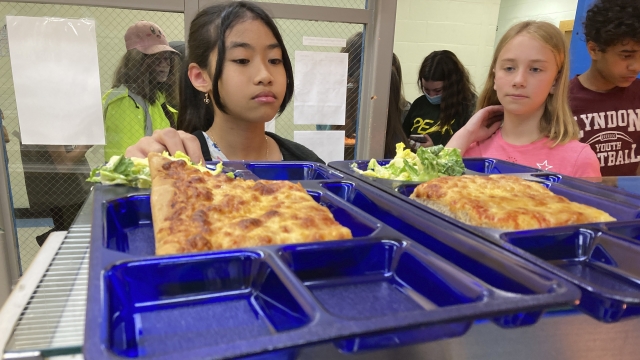It was one of a few signs of relief for families during the COVID crisis: Free breakfast and lunch for all public-school students.
But after the program ended last September, millions of parents were back to picking up the tab, with many struggling to pay.
In Ann Arbor, Michigan, the school district accumulated over $66,000 in student lunch debt in just one year.
"I've seen students come in and say, 'I'm hungry but grandma says I can't get breakfast today because we can't afford it anymore,'" said Kelsey Friend, a math coach in the Ann Arbor Public School District.
But this year, Michigan's public-school students are back with free breakfast and lunches after state legislators passed a bill wiping all the debt clean.
According to the National Conference of State Legislatures, Michigan and Massachusetts now join five other states with mandatory universal school meal programs.
Four states have expanded access to free or reduced meals, while dozens of states are debating similar legislation. But many parents are reliant on one of the federal free or reduced meal programs, but only if their district opts in.
If families earn too much to qualify, but not enough to afford the bills, school districts say they're left with the tab.
"That cuts into funds for teachers, textbooks, and band uniforms — all the things we want to make sure students have access to," said Diane Pratt-Heavner, the director of media relations at the School Nutrition Association.
SEE MORE: Could giving kids more access to water at school prevent weight gain?
In May, one national survey found public schools have $262 million in unpaid meal debt and can't use federal funds to cut it down.
The Education Data Initiative says over 30 million students are unable to afford breakfast or lunch. That puts individual debt at $180 per child a year, a price parents like Jennifer Reznick say they can't afford amid high inflation hitting other necessities.
"Your rent has doubled. Your mortgage has doubled, electric bill has doubled. Your car insurance just went up," said Reznick.
And meals might get more expensive this year, with the USDA expected to enforce rules to serve healthier, yet pricier meals with less salt and sugar.
Some nutritionists worry kids won't want to eat different food, which could also affect their health, considering students eat up to 40% of their daily calories at school, according to the American Academy of Pediatrics.
If your child doesn't qualify for federal help this school year, administrators say it's best to reach out and see if there are local programs that work with food banks.
Parents can also apply for a free or reduced-price meal at any time during the year.
SEE MORE: Illinois ready to make school meals free as federal efforts falter
Trending stories at Scrippsnews.com



